No Products in the Cart
Have you ever been captivated by a searing guitar solo that cuts through the mix, expressing a powerful melody or emotion? That's the magic of a killer lead guitar tone. Since my early days obsessing over Led Zepplin and Jimi Hendrix, I've been on a constant quest to unlock the secrets of these legendary sounds, from modern high-gain shred to classic rock crunch. Today, my heroes include players like Nick Johnston, Plini, Aaron Marshall of Intervals, and Alex Cooke of Wavetypes – all masters of crafting expressive lead tones.
While I personally favor the versatility of tones that border on the edge of breakup, I've come to realize one key truth: there's no single formula for achieving greatness. The beauty of lead guitar tone lies in its vastness. Countless iconic tones throughout history have been sculpted with a mind-blowing array of guitars, amps, and effects.

The good news for aspiring lead players? You don't need a pro's gear collection to get started. Contrary to popular belief, some of the most revered tones are surprisingly simple. In fact, oftentimes "less is more" when it comes to crafting a killer lead sound. Cranking the gain and stacking effects might seem tempting, but the truth is, many legendary tones were achieved with a surprisingly basic setup.
This article will unveil the secrets behind crafting your own signature lead guitar tone. We'll explore the essential building blocks - from guitars and amplifiers to the indispensable effects pedals that can elevate your playing. Along the way, we'll dive into some iconic examples and offer practical tips to help you get started, regardless of your budget. Whether you're chasing a searing Hendrix-inspired tone or aiming for the crystalline brilliance of a Plini solo, this guide will equip you with the knowledge to craft your own expressive lead sound.
A strong foundation for your killer lead tone starts with the right tools. Let's delve into the two key players; amps and guitars.
The type of guitar you choose plays a significant role in shaping your sound. Solid-body guitars, with their full, rich tone, are a popular choice for lead playing. They offer excellent sustain, perfect for creating long, singing notes. However, don't discount the charm of semi-hollow guitars. These beauties offer a warmer, woodier character that can add a touch of vintage vibe to your leads. Check out our selection of killer guitars to find your perfect fit.
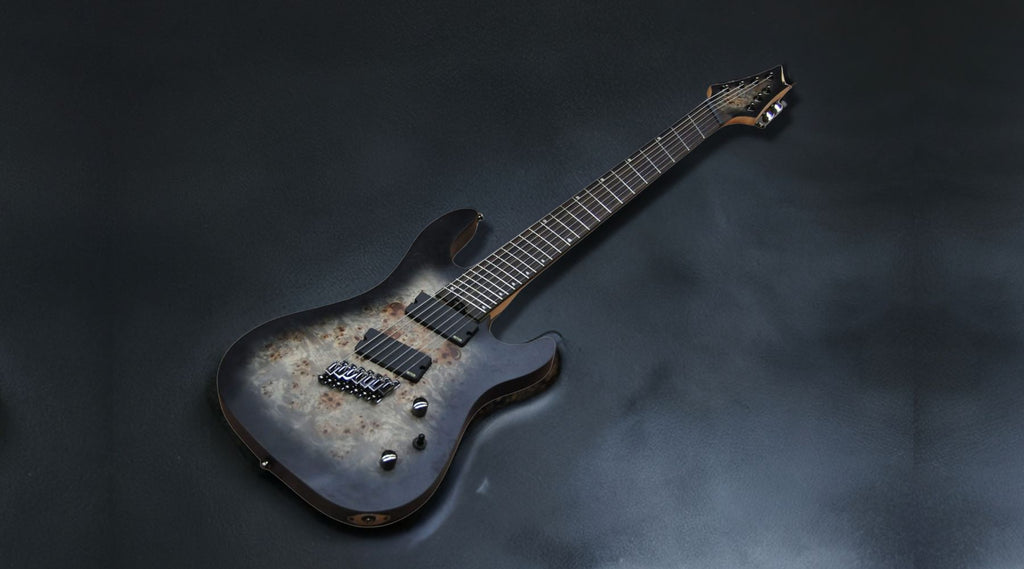
Fishman Fluence pickups make the Cort KX507 a highly versatile instrument that meets the demands of modern guitarists.
Another crucial element within your guitar is the pickup. These magnetic marvels convert string vibrations into electrical signals, essentially capturing the essence of your tone. Single-coil pickups are known for their bright, clear, and often chimey sound, perfect for cutting through the mix. Humbuckers, on the other hand, provide a thicker, warmer, and more powerful output, ideal for achieving high-gain tones with plenty of punch.
When it comes to selecting your ideal pickup position, there is no right answer. Some players prefer the smooth, round tone of a neck pickup and others prefer the bright, treble-dominant sound of the bridge pickup. The pickup selection you choose will have a big impact on your tone, and I recommend experimenting with both and choosing whatever sounds best or closest to your dream lead tone.
Your amp is the engine that breathes life into your guitar's sound. It takes the electrical signal from your pickups and amplifies it, shaping its character and overall volume. Amps like the Line 6 Catalyst 100, for instance, offer incredible versatility, boasting built-in effects and programmable presets. This makes it easier than ever to explore and cycle through a vast array of lead tones without spending all of your time sorting and rearranging a bunch of pedals.
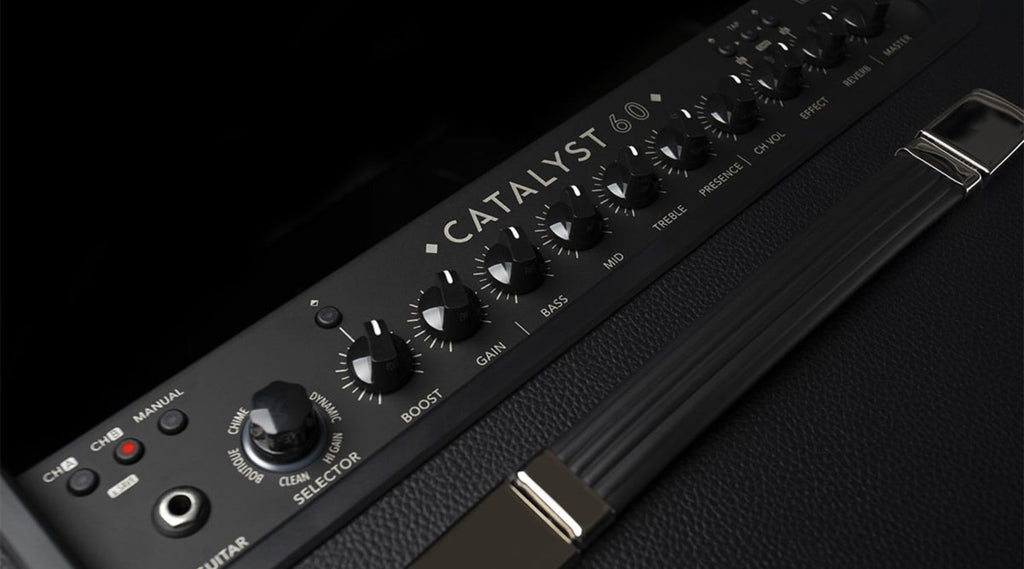
The Line 6 Catalyst also comes in a 60-watt version.
Now, let's talk about the two main amp types: tube amps and solid-state amps. Tube amps are known for their classic, warm sound with a natural overdrive character when pushed hard. This warmth and natural compression are highly sought after by lead guitarists. Solid-state amps, on the other hand, offer a more transparent and reliable sound, often favored for their affordability and lighter weight. While they might not have the natural overdrive of tube amps, many solid-state amps offer built-in distortion channels that can still achieve great lead tones. Check out our selection of amps and find one that speaks to you.
Once you've established your foundation with a guitar and amp, it's time to explore the exciting world of effects pedals – your tools for crafting unique and expressive lead tones. Pedals act as individual processors, manipulating your guitar's signal in various ways. Imagine them as artistic filters, each adding a distinct flavor to your sound, shaping the texture, character, and overall feel of your leads.
These little boxes work together in a chain, with your guitar signal passing through them sequentially. The order you place them in the chain can significantly impact the final sound, so experiment to find what works best for you. Here's a breakdown of some essential pedal types that can elevate your lead playing.
Overdrive pedals are the cornerstones of the majority of the most iconic lead guitar sounds such as the classic tones of Jimmy Page or the modern, high-gain lead tones of Gojira. Overdrive pedals add grit, sustain, and that vocal-like quality that allows your notes to soar. They also enhance the dynamics of your playing, aiding advanced techniques like tapping and harmonics. They're perfect for achieving iconic tones like bluesy drive or prog-rock crunch.
When it comes to overdrive pedals, the key is moderation, particularly if your amplifier already packs a high-gain punch. Maintaining a balance by keeping the gain dialed down ensures clarity, enabling you to articulate every note with precision. This approach allows your picking and fretting techniques to shine, empowering you to manipulate the dynamics of your playing. Rather than relying on excessive gain to obscure imperfections, focus on refining your technique for a more nuanced and expressive performance.
Discover the perfect overdrive and distortion pedals for your ideal tone.
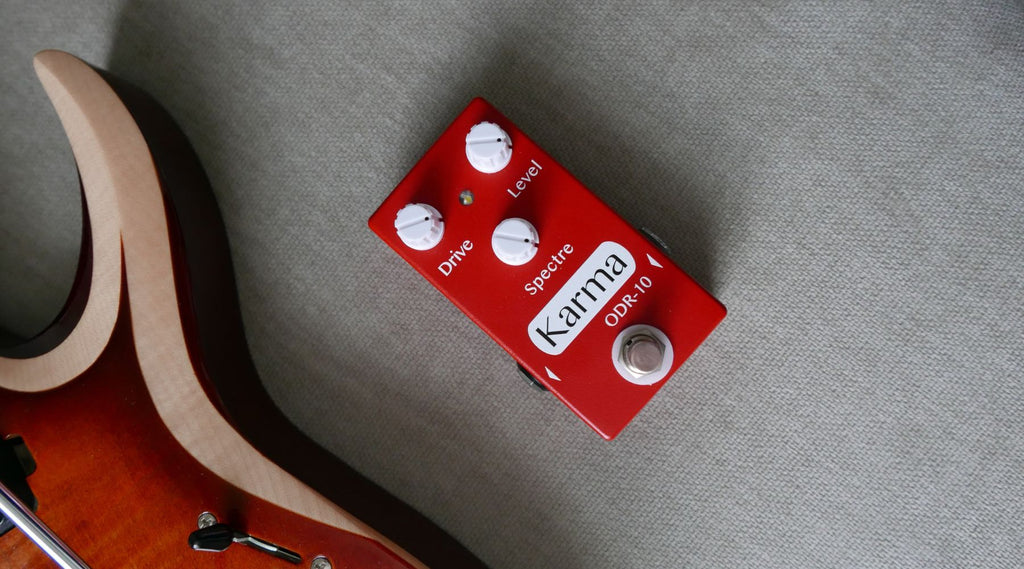
One of our all-time favorite overdrive pedals is the versatile Karma ODR-10.
Reverb adds depth, atmosphere, and a sense of ambience to your sound to make your leads sound richer and imbue a sense of emotion. There are different reverb types, like spring reverb (think classic surf rock) and plate reverb (known for its smooth and lush character). Some of my favorite lead tones, like those of Alex Cooke, utilize a healthy serving of reverb that enhances the emotion in his playing. Check out Alex’s tone in this playthrough of his track,
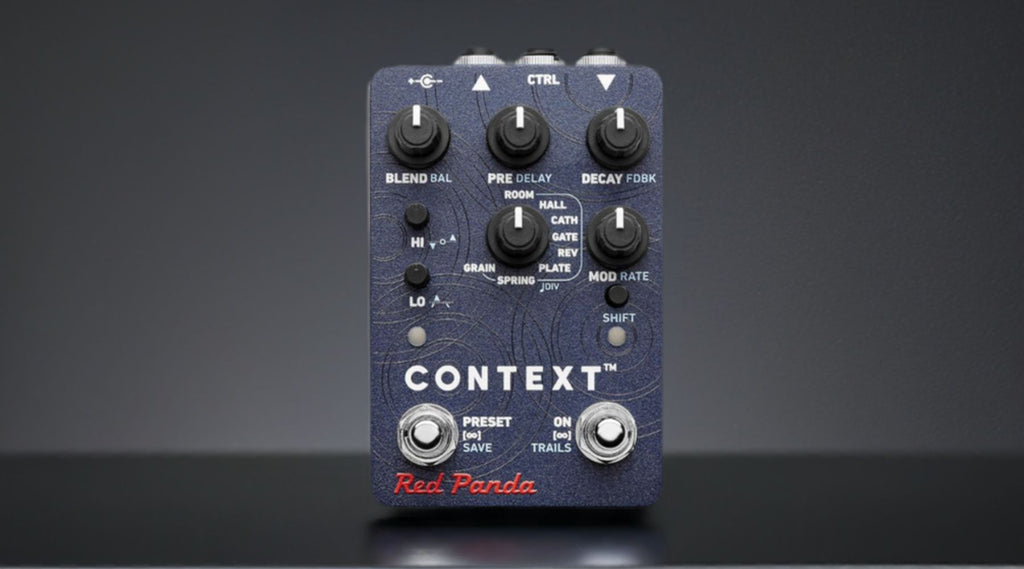
Delay pedals create echoes of your notes, adding texture, rhythmic interest, to create unique and spacious lead tones. From slapback delays (think rockabilly) to long, cascading delays for ambient soundscapes, these pedals offer a universe of sonic possibilities. Delay is not as forgiving of an effect as overdrive and reverb, meaning that it is quite easy to overdo it and takes a certain level of skill and restraint to use effectively.
However, when employed thoughtfully, delay pedals can elevate your lead playing to new heights, adding depth, dimension, and a sense of atmosphere to your sound. Experimentation is key; by adjusting parameters such as delay time, feedback, and modulation, you can sculpt a wide range of tones that complement your playing style and musical vision. With patience and creativity, you'll discover the power of delay to transform ordinary phrases into captivating sonic journeys, making each note resonate with a timeless allure.
Sculpt your sonic ambience and express emotion in your playing with one of our many reverb and delay pedals.
For those who crave versatility without the clutter of individual pedals, multi-effects units and amp modelers offer a powerful all-in-one solution. Imagine having a treasure trove of effects and amp tones at your fingertips, all neatly housed in a single unit. This translates to a simpler and more streamlined setup, especially for gigging musicians or those with limited space. Experimenting with sounds becomes a breeze with built-in presets and the ability to save your own custom creations.
Plus, many units allow you to download presets from other guitarists, opening doors to a vast world of sonic inspiration without ever needing to mess around with dials on multiple pedals. This user-friendly approach lets you focus on playing and creating, not getting lost in the minutiae of your effects chain. Find the right multi-effect pedal or amp modeler for you.
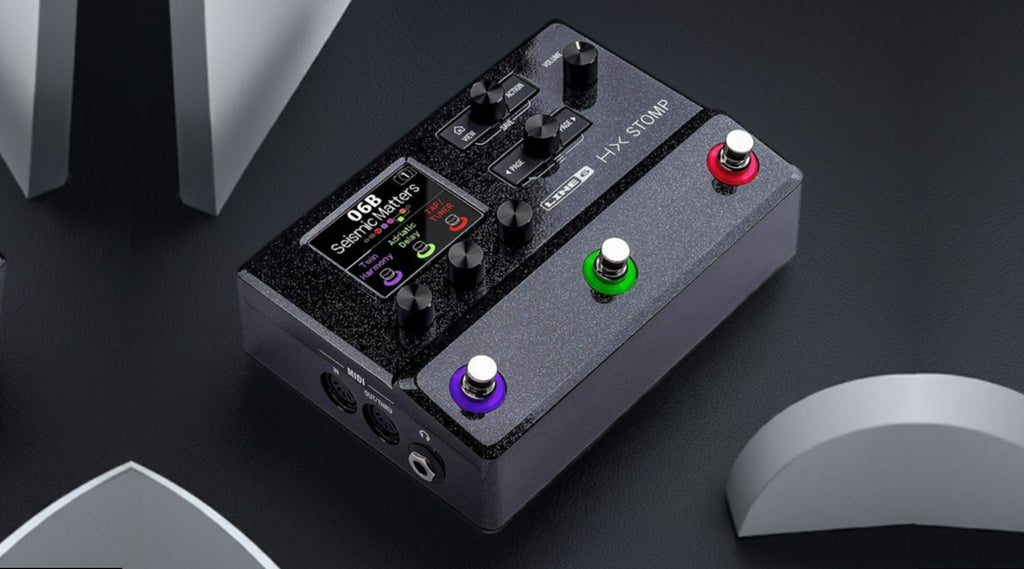
While the choice of pickups, amps, and effects pedals lay the foundation for your lead tone, the magic of EQ settings truly brings it to life. EQ, or equalization, allows you to sculpt the sonic frequencies of your lead guitar, ensuring it sits perfectly within the mix. Imagine a canvas where each instrument occupies a specific frequency range. EQ helps you define your lead tone's position on this canvas, ensuring it both shines through and complements the other instruments.
Here's how you can leverage EQ to achieve the perfect balance:
Lead guitar tones often benefit from a slight treble boost, giving them definition and bite. However, overdoing it can lead to harshness. Finding the sweet spot allows your lead lines to cut through the mix without clashing with cymbals.
Lead lines often share the mid-range frequencies with vocals. A strategic mid-scoop can create space for vocals to sit prominently without being overpowered by the guitar. Imagine carving a small valley in your EQ curve to accommodate the vocals.
While bass plays the low-end anchor, a touch of bass cut can tighten up your lead tone and prevent it from muddying up the overall mix. Think of it as cleaning up the low-end rumble to let the bass line shine through.
Remember, EQ is a powerful tool, but use it subtly. Start with small adjustments and listen carefully to how they affect your tone in the context of a full mix. There's no one-size-fits-all solution – experiment with different EQ settings to find what works best for your specific gear and playing style.
By mastering the art of EQ, you'll transform your lead tones from isolated sounds to integral parts of a cohesive mix. Don't be afraid to experiment and find your own sonic signature! Grab your very own EQ pedal from our shop.
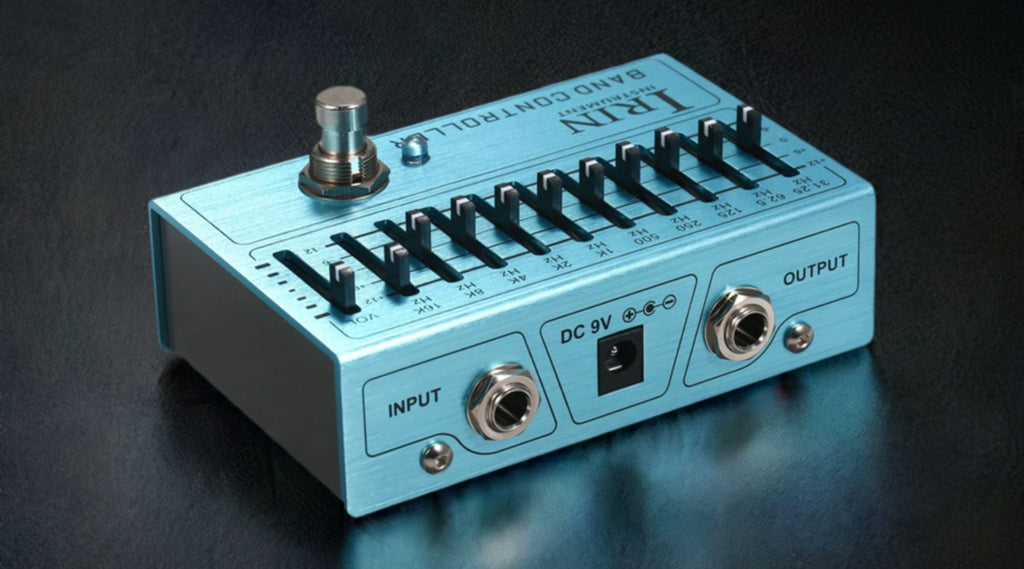 A basic 10-band EQ like the IRIN Band Controller is more than sufficient for sculpting your ideal lead tone.
A basic 10-band EQ like the IRIN Band Controller is more than sufficient for sculpting your ideal lead tone.
Now that you've explored the building blocks and tools, let's delve into how legendary guitarists have crafted their iconic lead tones. By understanding their approach, you can gain valuable insights to inspire your own sonic journey.
David Gilmour's lead tone is a masterclass in balance and expression. He achieves his signature sound with a combination of fuzz pedals for extended sustain, generous amounts of delay, modulation, and reverb, all tied together with compression for a smooth and even attack. While replicating it perfectly takes dedication and experimentation, understanding his core principles is a great starting point. Explore the sonic landscapes of "Comfortably Numb" or "Time" to hear these elements come together beautifully.
John Petrucci is renowned for his lightning-fast playing and meticulously crafted tones. He leverages his pickups strategically, switching between the neck and bridge humbucker depending on the desired attack and tonal character. A core element of his sound is a clean amp foundation, allowing the character of his overdrive pedal to shine through. Imagine the clarity of the clean channel with a modern, scooped overdrive for a tight and articulate lead tone.
Plini's signature lead tone is all about clarity and ambience. He uses a clean, split-coil sound as his foundation, then adds subtle layers of compression, overdrive, delay, and reverb for a smooth, singing quality. The key is moderation – a touch of low to mid-gain distortion keeps things defined, while a generous dose of reverb creates a lush, spacious atmosphere. Experiment with your EQ, rolling off the treble slightly and boosting the mids for a fatter sound that sits well in a mix.
If there is one thing you take away from this article, I hope it’s that you don’t need a mountain of gear and a massive budget to dial in your ideal lead tone.
Just keep these simple and practical tips in mind:
Remember, there are no set rules! Experiment with different pedal combinations, tweak knobs, and don't be afraid to get creative. The key is to find what sounds inspiring to you. As your skills and sonic palette develop, you can explore the vast world of effects pedals we offer to further refine your unique lead voice.
Brett, the owner and founder of Ploutone, is a modern guitarist on a mission to create a sustainable future and build a thriving community through the power of music. Brett founded Ploutone to celebrate independent artists and foster connections among guitarists worldwide. With a vision of spreading positivity and promoting sustainability, Brett hopes to inspire others to push the boundaries of their instruments and contribute to a better world.
MEET THE OWNER